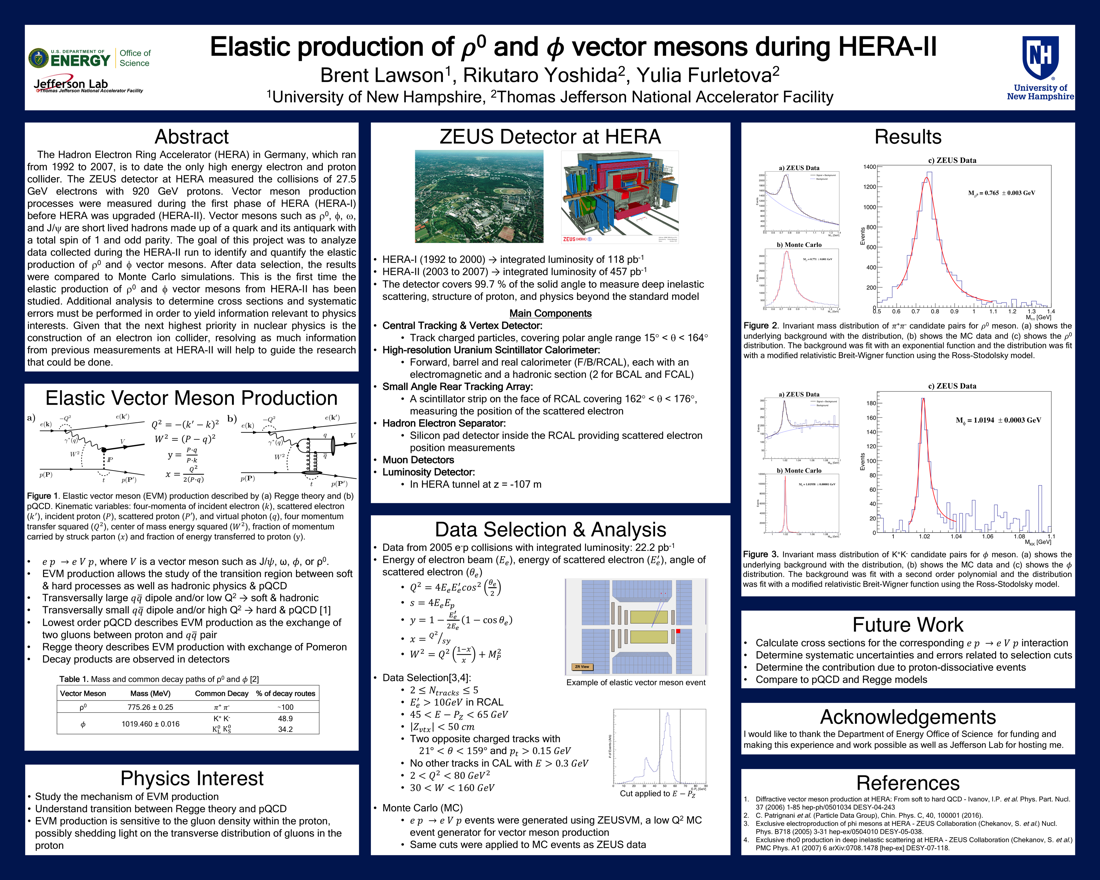Undergraduate Research at Jefferson Lab
Elastic ρ0 and φ Vector Meson Production at HERA-II
Student: Brent Lawson
School: University of New Hampshire
Mentored By: Rikutaro Yoshida
The Hadron Electron Ring Accelerator (HERA) in Germany, which ran from 1992 to 2007, is to date the only high energy electron and proton collider. The ZEUS detector at HERA measured the collisions of 27.5 GeV electrons with 920 GeV protons. Elastic vector meson production was measured during the first phase of HERA (HERA-I) from 1992 to 2000 before HERA was upgraded in 2003 (HERA-II) with increased luminosity. Vector mesons such as ρ0, φ, ω, and J/ψ are short lived hadrons made up of a quark and its antiquark with a total spin of 1 and odd parity. The elastic production of vector mesons during Deep Inelastic Scattering events, such as at HERA, remains poorly understood. The goal of this project was to analyze data collected during the HERA-II run to identify and quantify the elastic production of the ρ0 and φ vector mesons. Runs from the ZEUS experiment were taken from 2005, corresponding to an integrated luminosity of 22.2 pb-1. After data selection, the results were compared to Monte Carlo simulations. Both the φ meson and ρ0 meson were detected with masses consistent with their theoretical and previously observed invariant masses. This is the first time ρ0 and φ vector mesons from HERA-II have been studied. Additional analysis to determine systematic errors is necessary to yield information relevant to physics interests. Given that the next highest priority in nuclear physics is the construction of an electron ion collider, resolving as much information from previous measurements at HERA-II will help to guide the research.

Citation and linking information
For questions about this page, please contact Education Web Administrator.
